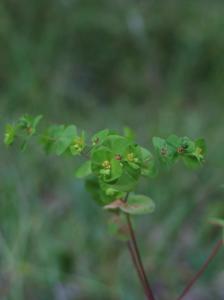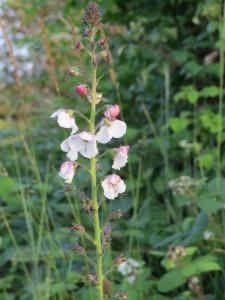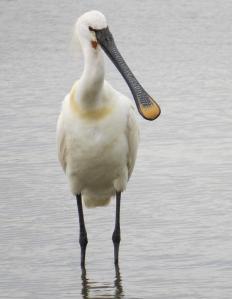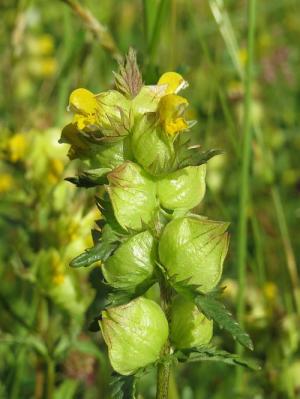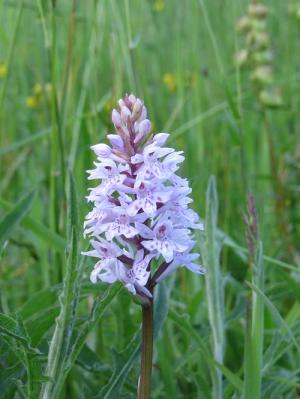It’s the time of year when orthopterans are out in force just about anywhere with any decent vegetation. There are four families represented in Britain: grasshoppers are common and familiar; the larger bush-crickets (which many people just refer to as “crickets”) are less conspicuous but still common; then there are the groundhoppers, which take a bit of searching for, and the true crickets, which are just downright rare. This diversity is the reason for going ever-so-slightly jargony with that first sentence: there isn’t really a single good shorthand name, the best compromise probably being “Grasshopper and crickets”.
They are quite an easy group to get to grips with, as there are only about 30 species in Britain, and the species featured in Vic Savery’s photos below is an easy one to identify: the long antennae and chunky body are characteristic of a bush-cricket, and the pale crescent around the edge of the side-panels of the thorax are a dead giveaway for Roesel’s Bush-cricket (Metrioptera roeselii).
 |
 |
| Roesel’s Bush-cricket, 12 August 2013, Avonmouth, Bristol, Vic Savery (naturenutz.net) | |
When the last national Orthoptera atlas was published back in 1997, Roesel’s Bush-cricket was largely confined to the Home Counties, with isolated outlying coastal populations in a few other areas. However, like a number of other species of bush-cricket, its populations have expanded since then, and it now occurs around Bristol. It is well-established in Wiltshire and Gloucestershire and has also spread into Gwent in the last decade. Robert Cropper’s 2011 book “The Orthoptera and allied insects of Somerset” documents surprisingly few Somerset sites: a strong population around Bridgwater possibly marks the southwestern edge of the current British range, although the range expansion is no doubt ongoing, so I’m sure that the species will reach Devon soon if it hasn’t already.
The song of Roesel’s Bush-cricket is a high-pitched buzzing, pitched at around 22 kHz. If like me, your hearing has deteriorated to the point where you can’t hear sounds which are that high-pitched, you’ll need to use an electronic detector to track one down. Vic tells me there were three or four singing at his site, on Kingweston Lane near Avonmouth. In all likelihood there are other sites elsewhere in the city too.



